The temperature in the mountains normally decreases with increased elevation, but there are local phenomena and places with temperature inversion and these are called frost hollows or frost pockets.
If you are a hiker or mountaineer, you may have been in such places even without knowing about their real nature. See the illustration below to see what I mean. But there are some potential hidden dangers at such places which you should be aware of.
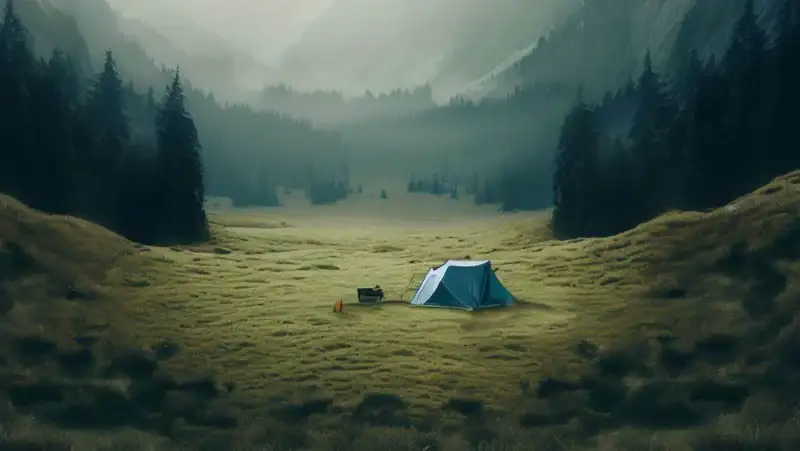
What is a frost pocket or frost hollow?
Frost hollows, also known as frost pockets, are intriguing geographical phenomena commonly found in mountainous regions.
These are natural depressions or local low points within mountain ranges. They exhibit unique microclimates characterized by significantly colder temperatures compared to the surrounding slopes.
I am writing this text in the mountains, in a camping place at Cortina d’Ampezzo. Last night was very cold here, I think sub-zero temperature, although it is summer. But previous a few nights I was sleeping at several passes around, like Passo Giau and Passo Tre Croci, they are at much higher elevation yet it was not as cold as in the valley.
Why are frost pockets or frost hollows colder than the surrounding area?
Frost pockets develop in a local depression surrounded by high peaks. Namely, cold air is denser than warm air, and it flows naturally from the cold peaks downhill due to gravity.
When such air reaches the lowest points in the landscape, it settles there either because it has nowhere to go, or if there is little movement of air due to winds.
So the minimum temperatures in such a frost pocket can be significantly lower than in the area around. In fact, it can be tens of degrees colder than in the surrounding area and on the peaks above. This because peaks are more exposed to the wind and there is more mixing with the warmer air from the larger areas. You will see more in the video below.
The picture below shows one example, this is a plateau in the Dolomites, from my tour to Piz La Varella. Why do you think the trees do not grow directly on the bottom of this place? Only grass is there, and low bushes and trees are on the edges only.
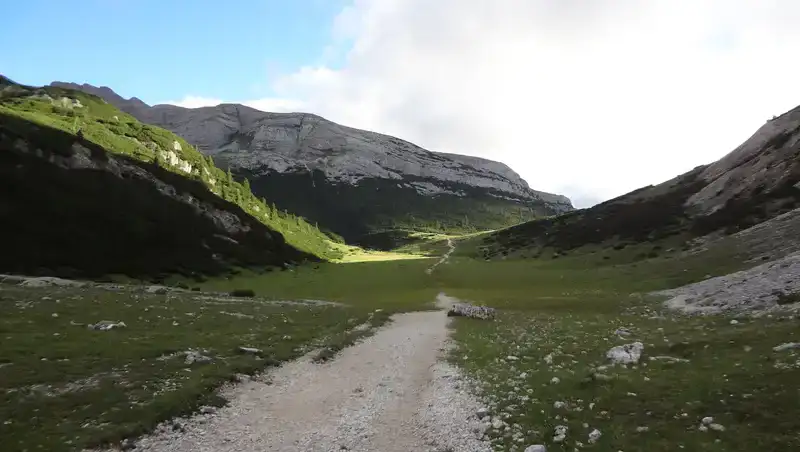
When can a frost pocket appear? Explanation of the geographical factors contributing to frost hollow formation
Frost hollows owe their existence to a combination of geographical factors, primarily driven by the unique topography of mountainous regions.
Firstly, topography and elevation play a pivotal role in the formation of these intriguing phenomena. When you delve into the heart of a mountain range, you’ll often find valleys, basins, or depressions nestled among the peaks. These lower-lying areas act as natural traps for cold, dense air.
The second critical factor is atmospheric conditions. Frost hollows typically form during clear, calm nights. Under such conditions, the Earth’s surface radiates heat back into the atmosphere rapidly, causing temperatures to plummet.
In these depressions, cold air drains from the surrounding slopes and collects, creating a reservoir of chilly air. It’s similar to how water accumulates in a basin, only in this case, it’s air, and it’s significantly colder than the air higher up the slopes.
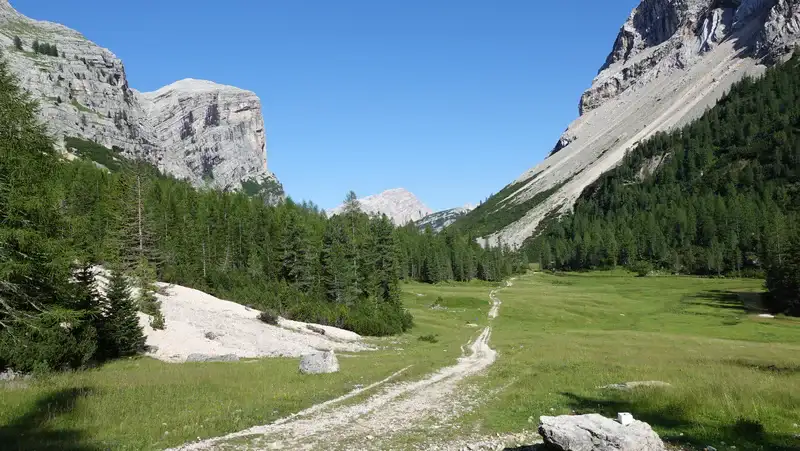
This is normally after a dry, clear and cold night that cold air drains down neighboring slopes into a localized pocket from which it is slow (or unable) to escape.
Frost hollows of larger scale (a valley or basin) are also known as cold pools. Cold pools are areas where cold air is trapped under an inversion under calm winter weather conditions.
Hidden Danger of Local Temperature Inversion in the Mountains
Understanding frost hollows may be of importance for hikers, backpackers, and mountaineers. This is easy to realize when you see the illustration given in the top picture above.
These are naturally flat and clear areas, and they look so inviting for pitching a tent there. See also the picture below from the Slovenian Alps and my tour to Jalovec. I was there in summer time and this was a very chili early morning.
So there is the hidden danger in this, related to much lower temperatures as described above. You should be prepared for this and have an appropriate equipment and clothing.
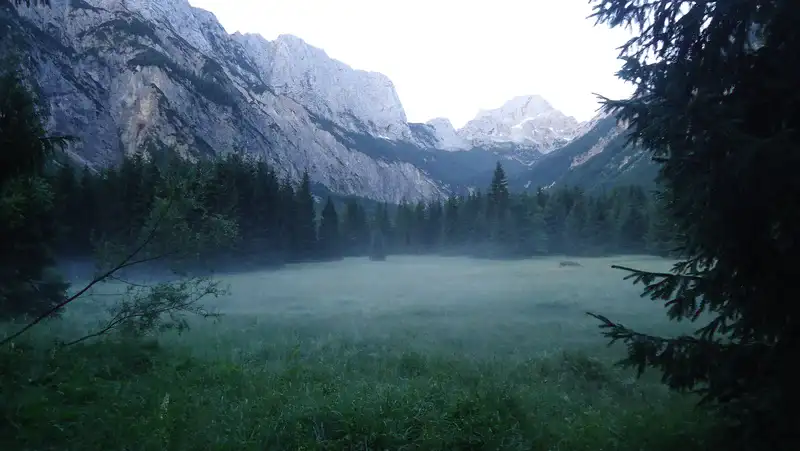
Frost hollows are of importance also for shaping local ecosystems, and they have practical implications for mountain farms with cattle and sheep, forestry, and human activity in general.
Such frost pockets are low lying areas typically on the bottom of surrounding slopes, and they are sparse in vegetation. The picture below from my tour to Krn mountain in the Slovenian Alps clearly demonstrates all this. There is lots of grass in such a place, that is genetically adapted for such places, but as you realize, trees do not grow there, they are above it.
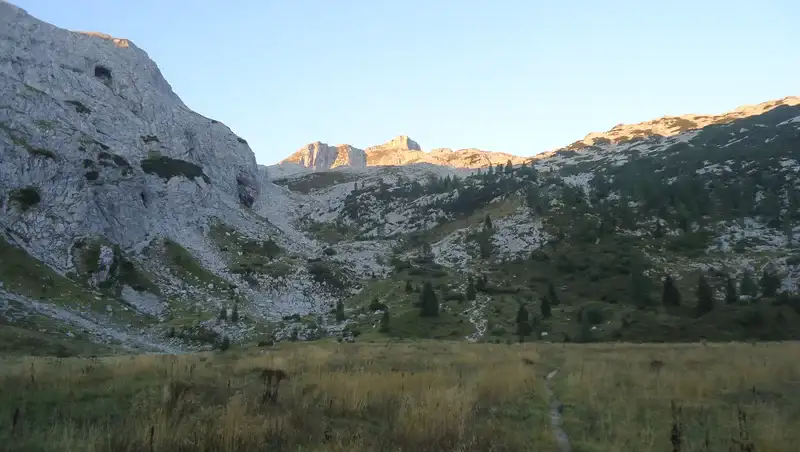
How do you identify frost pockets?
You have already seen some examples above. So typically these are clearings in an area with grass only, and surrounded by forests and bushes around. Now, why there are no trees and bushes in such places? Because this lower area is too cold for them, so they grow on the higher grounds around.
As mentioned above, this is about local depressions in the terrain. But this also means that sometimes such a place may be filled with water, it may contain a lake that “masks” the true nature of the spot.
So when you see such a place, this would naturally be your first choice for a camp. Flat areas for a tent, and water nearby; how better can it be?
But think twice, this can be the coldest spot on the mountain, and you can also have the highest possible humidity on the mountain. The combination of these two will not make your night pleasant.
During the night evaporation can be huge and everything will get wet. The picture below shows what I mean, this is a pleasant mountain lake under a cloud of fog, from my tour in the Slovenian Alps:
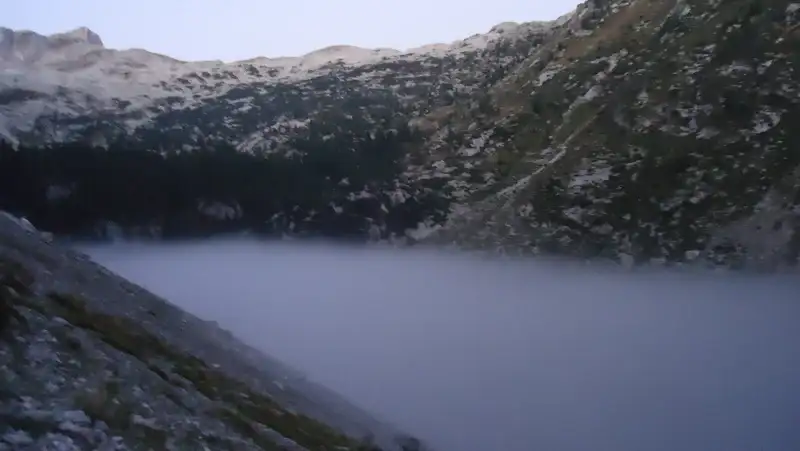
Frost pockets effects in war times
In the video below you will hear and see about a place in the Austrian Alps where the temperature use to be 20 degrees Celsius lower than on much higher peaks around.
More precisely, the temperature there can go to −52.6 °C (−62.7 °F). So during WWII Germans used to bring their military vehicles and equipment to test how they perform in extreme cold condition, preparing the army for the war in Russia and for temperatures expected there.
There was a march during the WWII in which 172 partisans suffered severe hypothermic injuries and some of them died.
So these are both examples of real frost pockets in areas that normally look very pleasant and inviting. I have been on Igman myself and know this from my own first hand experience.
Final thoughts
In conclusion, frost hollows or frost pockets are captivating features of mountainous regions with distinctive characteristics and practical importance.
Their formation is a result of a combination of topographical and atmospheric factors, leading to significant temperature variations and inversions. These microclimates affect plants and also play a role in human activity.
If you are a hiker and mountaineer, the point of this text is not to scare you. As you realize from the pictures shown above, these are truly beautiful places, and it is natural that you might want to make your overnight camp there.
But you should be aware of the possible effects of the local topology, so have a proper sleeping equipment. This means the following: Never go to the mountains without an insulated sleeping pad. A sleeping bag alone will not help you.
So make sure that you sleeping bag has an R-value 4 or higher. Check some of sleeping pads from Sea to Summit and also from Therm-a-Rest, these are the leading brands in this industry. I have the Sea to Summit Camp Plus Self-Inflating Foam Sleeping Mat in my tent while writing this text.
As for sleeping bags, you will find some great options from the brands mentioned above, so follow the links and check around. But see also among Big Agnes sleeping bags. This brand is a champion in this particular industry.
This site is all about outdoors questions and answers and I add texts here on a regular basis, so bookmark it and keep as a reference. You might want to read also my another text about the term alpine start. Check also my text about nose running in the mountains, this is something that I experience all the time.
Please use the comment box below in the case of questions or comments. Thank you for reading and have a nice day.
Leave a Reply